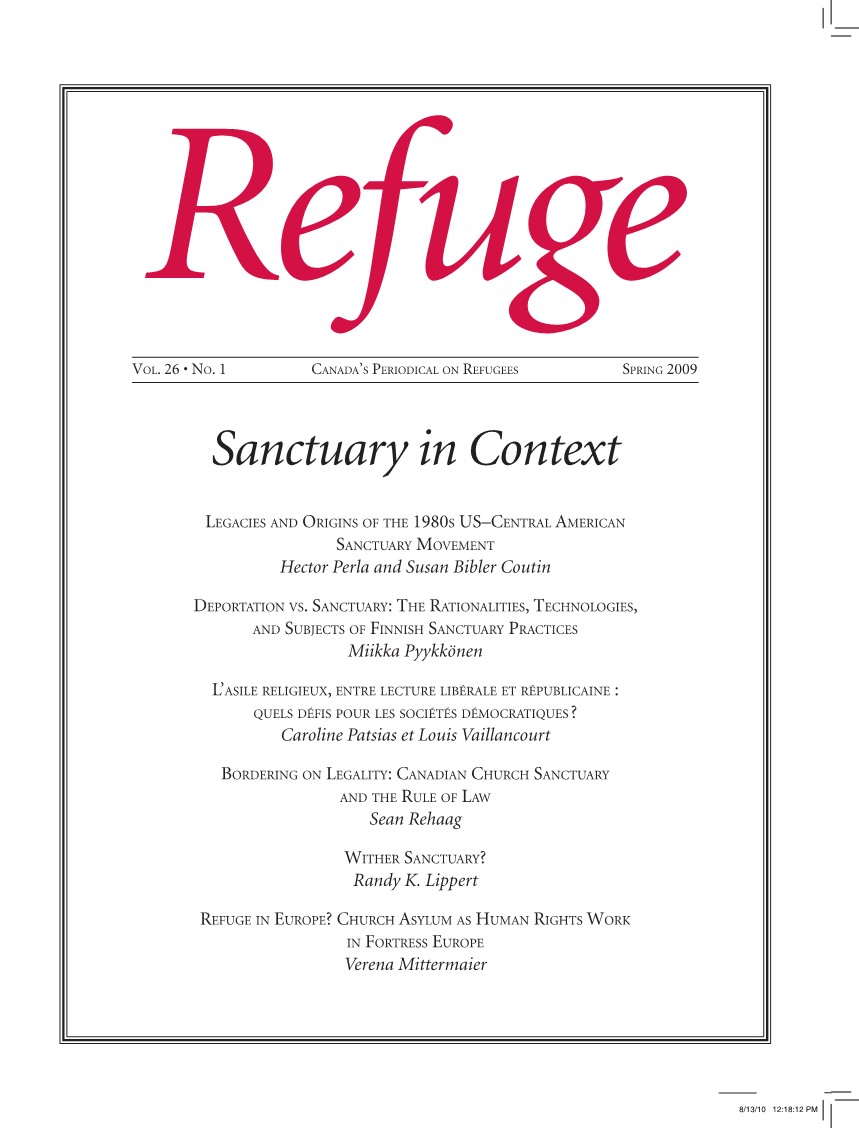Deportation vs. Sanctuary: The Rationalities, Technologies, and Subjects of Finnish Sanctuary Practices
DOI:
https://doi.org/10.25071/1920-7336.30603Abstract
Evangelical Lutheran parishes and their representatives have provided sanctuaries for asylum seekers for forty years in Finland.Yet this activity became widely publicly recognized only after the Finnish Ecumenical Council released the “Church as Sanctuary” document in 2007.The parishes are assisted by many civic organizations (e.g.women’s organizations, Free Movement Network, Amnesty International, and Finnish Refugee Council) in providing sanctuary.They share the same opponent: the state’s strict asylum policy.The various parties involved in Finnish sanctuary incidents can be divided into two groups using the terminology of the Foucaldian analytics of pastoral power: a state pastorate and the civic/church pastorate.The former tries to secure the vitality of its “flock,” the Finnish population, through strict control over asylum seekers.The latter pastorate challenges the state’s sovereignty to define its accepted members by offering alternative ways for asylum seekers to stay in the country and an alternative understanding of who this “flock” should include.In this article I analyze how these parties construct their subjectivities and the asylum-seeker’s subjectivity in the sanctuary incidents.Despite seeming opposition between the two pastorates, there are similarities in the ways by which they seek to clarify the inner soul-life of the asylum seekers and make them knowable and governable.
Metrics
Downloads
Published
Versions
- 2010-10-09 (2)
- 2010-10-08 (1)
How to Cite
Issue
Section
License
Copyright (c) 2010 Miikka Pyykkonen

This work is licensed under a Creative Commons Attribution-NonCommercial 4.0 International License.
Refuge authors retain the copyright over their work, and license it to the general public under the Creative Commons Attribution-Non Commercial License International (CC BY-NC 4.0). This license allows for non-commercial use, reproduction and adaption of the material in any medium or format, with proper attribution. For general information on Creative Commons licences, visit the Creative Commons site. For the CC BY-NC 4.0 license, review the human readable summary.







